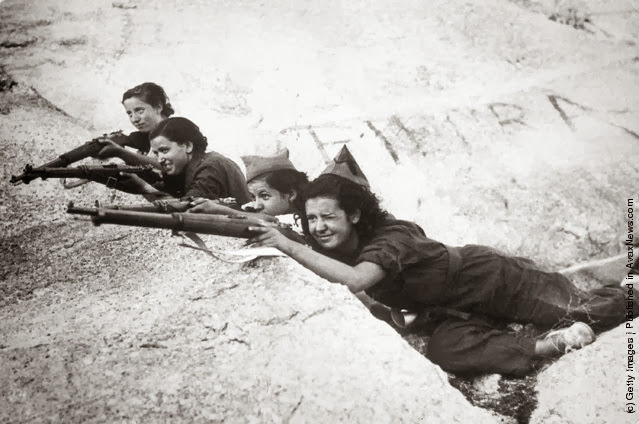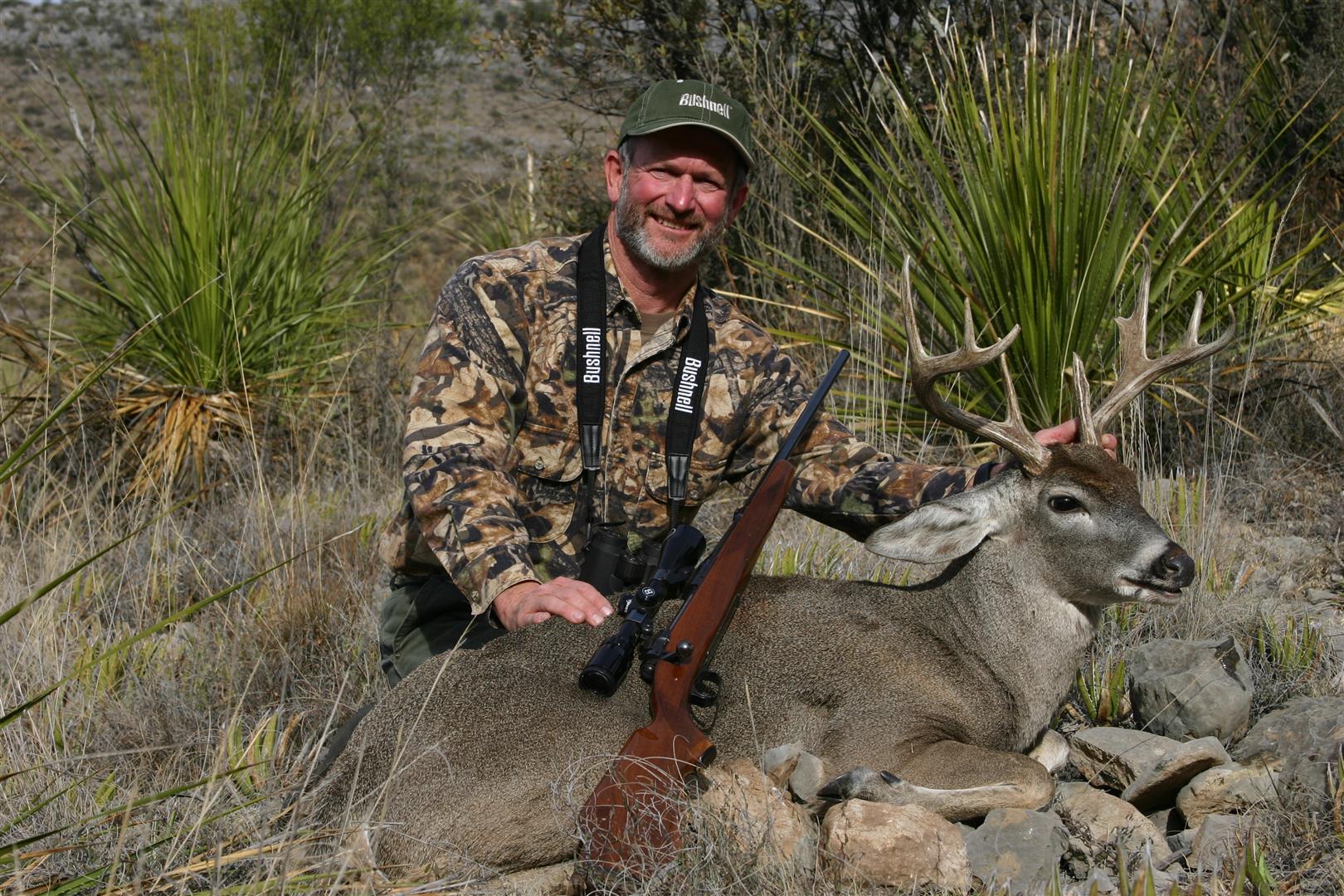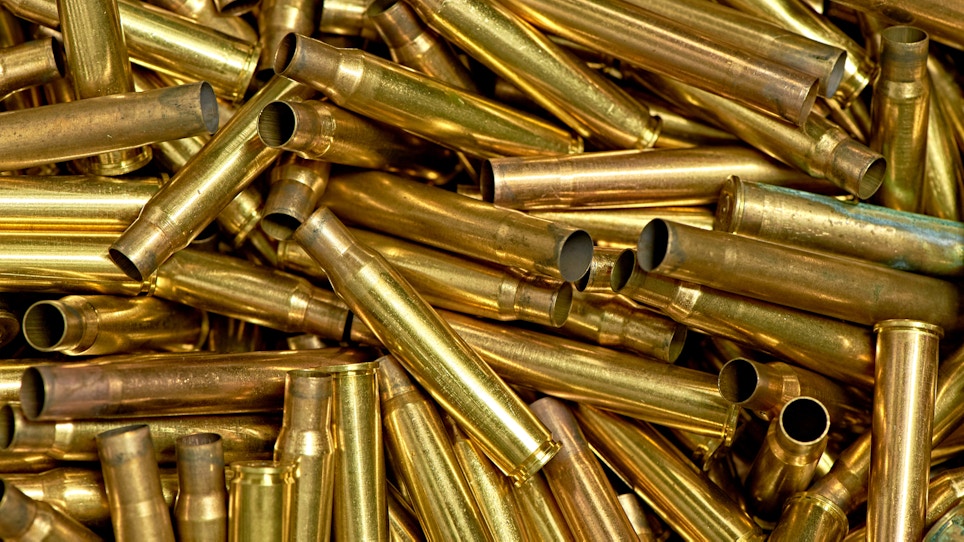If there's one thing big-game hunters like to do, it's sit and debate the relative merits of different cartridges and their performance capabilities on a wide variety of game. When it’s all said and done, it's hard to argue with the 7mm cartridges for general all-around North American big-game hunting.
These 10 “Magnificent Sevens” are today’s classics.
10) .284 Win.
Introduced by Winchester in 1963, the .284 Win. was designed to squeeze .270 performance from a new autoloader and old-style, lever-action rifles. The end result was a 7mm cartridge with about the same overall length as the .308 Win., but with a wider body. It yields a powder capacity similar to the .270 Winchester and .280 Remington. It’s a great little cartridge that never really got off the ground.
9) 7MM Remington SAUM
Introduced in 2001, the 7mm SAUM (Short Action Ultra Magnum) — along with its sister cartridge, the .300 Rem. SAUM — was Remington’s entry into the then-new world of short magnums. Basically, this short cartridge can do anything the 7mm Rem. Mag. can do. However, it does it in a lighter, shorter, fast-handling rifle while burning less powder. It is based on the same case as the .300 SAUM – the .300 Rem. Ultra Mag. — necked down to handle .284-inch bullets. It essentially uses less powder to achieve the same velocities as the standard 7mm Rem. Mag. with slightly less recoil. However, it’s another cartridge that never developed a strong following.
8) 7mm Mauser (7x57)

Spanish women firing their 1916 Mausers at the enemy in the Spanish Civil War (1936-39). (Photo credit: Getty Images)
Developed as a military cartridge by Mauser and introduced in 1892, the cartridge first gained prominence once adopted by the Spanish government and chambered in a limited number of bolt-action Mauser rifles. The “Spanish Mauser,” as it has since been known, was also adopted by Mexico and some South American countries for military use. In 1897, Remington chambered their old rolling block and Lee rifles for the cartridge. This was followed by their Model 30 and the Winchester Model 54 and 70.
Despite its virtues as a military round, the 7x57 proved itself early on as a superb big-game cartridge. Today, hunters can load the 7x57 with bullets ranging from 110 to 175 grains. Most choose the 140-grain as the best all-around hunting bullet. Ballistically, it ranks just slightly below the .270 Win., which many consider one of the best ever for deer-sized game, and even elk. Recoil is modest, meaning most all people can shoot it well. With a muzzle velocity of just under 2700 fps with the 140-grain bullet, the trajectory is excellent, making this fine little cartridge a superb deer/pronghorn round.
7) 7mm Remington Ultra Magnum
7mm Rem. Ultra Mag. was introduced in late 2000. All Remington Ultra Mag cartridges are necked-down versions of the .404 Jeffrey case. That gives these beltless magnums a very large case diameter. In turn, that gives them increased powder capacity for increased velocity and energy over other cartridges using the same bullet diameter. Consider this: the .22-250 is known as one of the fastest, flattest-shooting varmint rounds of all. Yet the 7mm Ultra Mag with 140-grain bullet shoots flatter than the .22-250 with 55-grain bullet. Obviously, this is a cartridge that has been designed for long-range big game hunting. It will kick you a bit though!
6) 7MM Shooting Times Westerner (STW)
Back in 1979, noted gun writer Layne Simpson tried something new: necking down the then-new 8mm Rem. Mag. case to 7mm. He introduced the new cartridge to the world in the May 1989 issue of Shooting Times magazine. The shooting and hunting public ate it up. The 7mm STW is a super long-range deer/elk round. Factory 140-grain loadings leave the barrel at about 3325 fps, while the 160-grain factory load leaves at about 3200 fps. The round has proven to be very accurate, doesn’t seem to kick a lot considering the velocity and energy delivered, and has an extremely flat trajectory.
5) 7mm Wby. Mag.
Developed in the 1940s by Roy Weatherby, nearly 20 years before the popular 7mm Rem. Mag., the 7mm Wby. Mag. had limited exposure until early 1950s when Weatherby rifles became more available. This cartridge gives non-handloaders handloaded 7mm Mag. performance, delivering about 400 fps more velocity than the 7mm Mauser. Though not as popular as many other Wby. Mag. cartridges, it’s well-suited for any North American game.
4) 7mm WSM
The 7mm Winchester Short Magnum (WSM) was designed in 2001 by Winchester Repeating Arms Company and Browning Arms Company. The case is based off a .300 WSM necked down to accept a .284-inch bullet. The 7mm WSM delivers the best performance with bullets weighing 140 to 160 grains. However, it has failed to gain the same popularity as the other cartridges in the WSM family, notably the .300 WSM and .270 WSM. Still, it’s a fine hunting cartridge.
3) 7mm-08
In an effort to combine the efficiency of the short .308 case with the ballistic coefficient of a 7mm bullet, the 7mm-08 was introduced in 1980 by Remington. It was initially somewhat falsely advertised as “the first modern 7mm round designed for use in short-action rifles.” (The .284 Winchester, introduced in 1963, came on the scene almost two decades earlier.) The 7mm-08 is also a direct copy of the wildcat 7mm/308 that dates back to at least 1958 and was touted in P.O. Ackley’s Handbook For Shooters and Reloaders in 1962.
Be that as it may, the 7mm-08 took a while to catch on with modern American hunters. For a period lasting a decade or more, hunters remained enthrallment with standard- and long-action rounds. With these rounds, they could cram a high volume of powder , often breaking the sound barrier with muzzle velocity. But catch-on it has, and the 7mm-08 is now rightly recognized as one of the finest all-around cartridges ever developed for deer-sized game. The cartridge combines the ability to be chambered in lightweight, short-action rifles, modest recoil. And when loaded with the standard 140-grain bullet, it offers plenty of “pop” to take the largest deer or black bears cleanly and quickly. It’s also quite accurate in most rifles.
2) 7mm Remington Magnum

A record-book Carmen Mountain whitetail Grand View Outdoors editorial director Bob Robb took in Coahuila, Mexico, using an old, classic rifle chambered for the .280 Rem.
The venerable “7 Mag” has taken most all the world’s biggest, toughest game. It’s been used for decades by hunters seeking a combination of flat trajectory and downrange energy delivery. In its current design, the belted 7mm Rem. Mag. was introduced by Remington in 1962 at the same the company replaced its Model 721, 722, and 725 bolt action rifles with the new Model 700 series. Both have proven themselves to be timeless.
The 7mm Rem. Mag. is a superb all-around, long-range, big-game cartridge used to confidently hunt all North American big game. It is inherently accurate and a wide range of bullet weights and styles are used depending on the task at hand. The cartridge’s only downfall may be that it’s somewhat of a “kicker,” which prevents many shooters from handling it as well as they might.
1) .280 Remington
Introduced by Remington back in 1957, it was initially chambered not in the Model 700 bolt action rifle but, instead, in the Model 740 autoloader and later in the Model 760 slide-action rifle and Model 721 and 725 bolt actions. From 1979 to 1980, Remington called the cartridge the 7mm Express Remington in an effort to spur sales, riding the wave of 7mm craze overtaking hunters at the time. Confusion reigned, though, so the next year they returned to the .280 moniker.
The .280 is essentially a .30-06 case necked down to 7mm, though it has a slightly different shoulder location and can not be chambered in either a .270 or .30-06. Generally speaking, when loaded with bullets weighing between 140- and 160-grains, it can do anything and everything the .30-06 can do with 150- to 180-gain. It is an inherently accurate cartridge that generates moderate recoil. Available in a huge array of production rifles, it allows the hunter to choose a rifle in this chambering that fits his wants and needs exactly.
Back in the mid-1980s, I obtained one of the then-new Remington Model 700 KS Mountain Rifles chambered in .280. I topped it with a Leupold Vari-X III 2.5-8X scope and went to work. While I shot some factory ammunition, I developed a load around IMR 4831 and the 160-grain Nosler Partition bullet that gave me a muzzle velocity of about 2,820 fps and 100-yard accuracy of just under an inch. That rifle/load combination accounted for an almost embarrassing amount of big-game animals. This included several bull elk and a pair of Alaskan interior grizzly bears. Neither of these big, tough animals noticed they were not hit with a .338, but died quickly and cleanly when the Partition took out both lungs.






